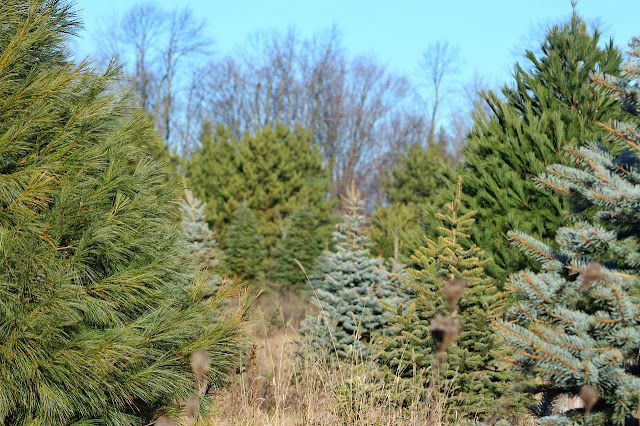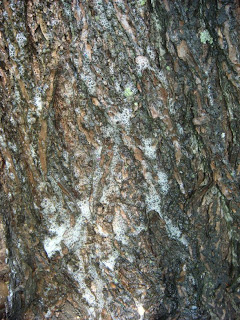Woods Whys: "Why Are Fir and Spruce Trees so Conical?"
 |
| Christmas tree farm with fir, pine, and spruce. |
Ask any young child to draw a Christmas tree and chances are he'll draw something close to a triangle. If the kid is particularly talented, she'll draw a cone. Indeed, the cone-shaped tree is as traditional as the holiday itself. Sure, there are the Charlie Browns among us who will settle for a less-than-perfect Christmas tree. But most of us look for a fir or spruce with just the right taper, symmetry, and conical form.
That conical shape is certainly the norm at most Christmas tree farms, and the short explanation for it is that the tree farmer shears them that way. Of course, there's more to it than that. Even if you are wandering afield in search of a wild Christmas tree far from any shears or knives, there are plenty of classic cone-shaped specimens out there. In winter, these conical evergreens stand out against the more rounded and leaf-less birches, beech, and maple.
Whether your tree came from the Boy Scouts' lot, a choose-and-cut plantation, or from your own back 40, the smart money says its shape is at least somewhat conical - though your spouse might say comical.
Like so many of nature's designs, trees - including spruce and fir - take shape according to a system. Their branches don't grow randomly in various directions. Rather, there's an intriguing pattern to this story. It's a story of dominance and control.
Look at a spruce or fir tree. At its top is one vertical shoot-the leader. It's usually longer than all the other shoots around it. That's because, appropriately enough, the leader exerts control over all the shoots below it. This mechanism has evolved, presumably, to ensure that the tree's main thrust is upward toward its source of energy, the sun.
Almost all trees begin their lives this way. Young seedlings of most species exhibit such straight-up form from the get-go. However, while a cone shape is retained in conifers, it is soon lost in most hardwoods as the tree grows and the single, central stem gives way to the forking of lateral branches that often grow at least as fast as the leader.
In spruce and fir the main stem or leader outgrows the lateral branches below it, resulting in a conical crown and a well-defined central trunk. The leader exercises its dominance with help from a hormone called auxin in the top bud of the leader, which inhibits the elongation of the shoots below it. They still grow, but not as much as the leader. The pattern goes like this: in any given year, increases in length are greatest at the top of the tree, and these increases diminish downward and inward, toward the bottom. The reason the lower branches are longer is that are older. They've had more years to add growth. But in any given year they don't grow as much as the upper branches because the leader partially suppresses the branches below. Thus, the tree takes a conical form and maintains it indefinitely.
 |
| Snow trees in Mt. Mansfield State Forest. |
Or at least until the leader's dominance is interrupted. This occurs, for example, if an insect destroys the bud at the top of the leader. In such cases the lateral shoots just below the leader - newly freed from its control - resume growth at their full potential, vying to outpace each other in a race for dominance. The fastest growing of them becomes the new leader, dispatching its hormones to suppress the others. The result is a crooked stern, as seen in so many weeviled white pines.
Some ecologists have suggested that a conical form might confer an advantage to trees growing in montane environments by reducing potentially damaging snowloads on branches. This certainly makes sense considering the winter environment of so many spruce and fir trees.
There is an interesting irony to this conical story. Although the dominant-leader phenomenon results in the conical shape so sought after in Christmas trees, Christmas tree growers actually try to overcome it by shearing. Without shearing, the tree does take on a nice conical shape, but an unsheared tree is very open. That is, it tends to be airy, not very dense. Shearing, on the other hand, stimulates the opening of the many buds lying dormant along the branches, and encourages the shoots within them to elongate. This results in a fuller, more dense tree. May all your Christmas trees be just the way you want them.
---Like what you read? Want to learn more about the Northeast Woods? Grab a copy of Woods Whys: An Exploration of Forests and Forestry by Michael Snyder.

.jpg)
.jpg)
Comments
Post a Comment
Feel free to let us know what you think.